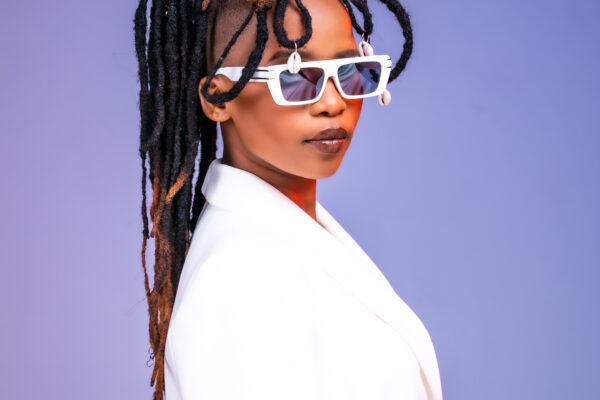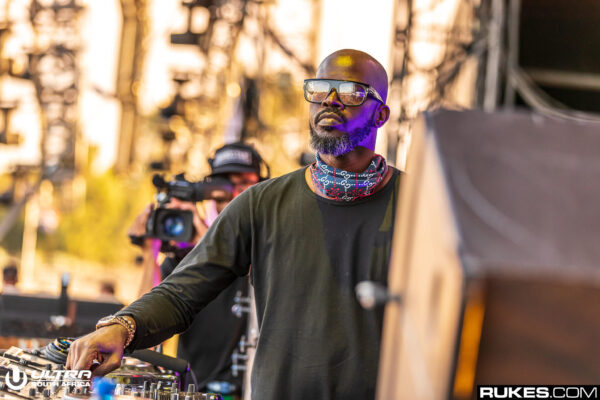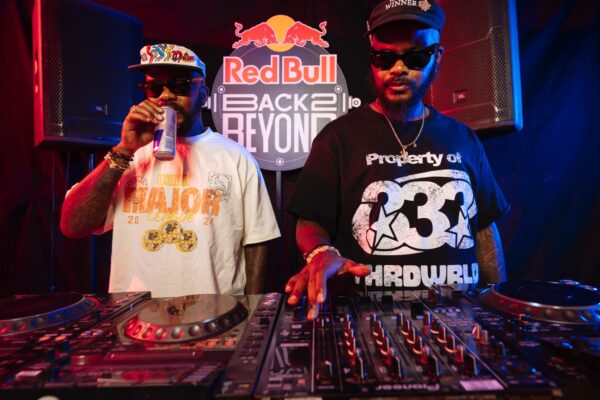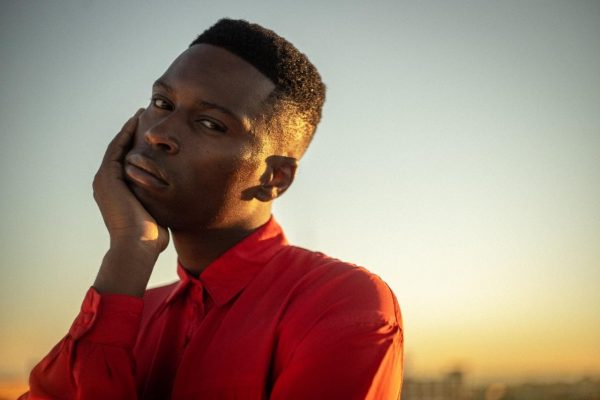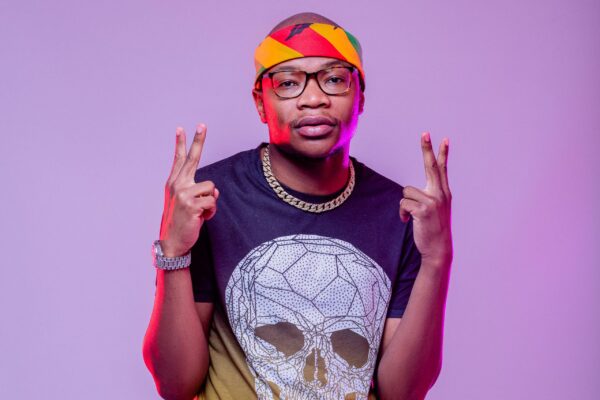If You Look Hard Enough, You Can See Our Future is a bold and moving exhibition spotlighting the depth and dynamism of Southern African contemporary art. Curated from the renowned Nando’s Art Collection, it showcases an exceptional range of artists—including globally recognized figures like Zanele Muholi and William Kentridge—alongside emerging talents. The exhibition spans diverse mediums such as portraiture, abstraction, and mixed media, offering a powerful narrative of identity, memory, and possibility.
With stops in cities like Dallas, Atlanta, and now New Orleans, the traveling show bridges Southern African artistic voices with global audiences, creating space for cultural dialogue and redefining perceptions of African art. It is a celebration of the South—both the Southern tip of Africa and the American South—through visual storytelling that challenges, moves, and inspires.
Interview with exhibition curator Laurie Ann Farrell.

IceKream: Your exhibition, If You Look Hard Enough, You Can See Our Future, has received significant acclaim. What does this exhibition mean to you personally, especially as it brings Southern African contemporary art to international audiences?
- I have a deep personal connection to See Our Future as my friend, the late Dick Enthoven, invited me to work with the collection for the North American debut tour.
I worked with Dick and the Spier Arts Trust in 2004 on the Decade of Democracy show Personal Affects in 2004 and we stayed in contact over the years. Knowing how much bringing South African art to the world meant to Dick, I was keen to curate a meaningful exhibition that he would have been proud of, and that represented the remarkable collection.
IceKream: This exhibition features some of the most important contemporary Southern African artists. How did you go about selecting the works for this show, and what were the key themes you wanted to convey?
- Yes, there’s a nice mix of the usual suspects, mid-career and many discoveries. I was given access to the Spier Arts Trust collection database during the 2020 COVID lockdown. I spent months combing through the collection to familiarize myself with the collection’s strengths. The first time I went through the collection, I only looked at images. Then, on the second pass, I would make screengrabs of works that spoke to me. If I didn’t know the artist, I would do a little research to learn about their practice. A former colleague from the Detroit Institute of the Arts, Lexi Nickolaou, helped me organize selections into thematic groupings, and then the hard work of making cuts began as I originally had close to 200 works on the first wish list. I found the Nando’s Art Collection particularly strong in portraiture, place, and abstraction, so the show developed organically along those lines.
IceKream: What has been the most rewarding part of curating the Nando’s Art Collection exhibition, and how do you see it impacting cultural dialogue, especially in cities like New Orleans?
- The most rewarding aspect for me has been providing much-deserved visibility for the artists. See Our Future echoed some of the themes in other high-profile exhibitions was also gratifying. For example, portraiture was addressed by museums around the world in the past few years, notably the “When They See Us: A Century of Black Figuration in Painting” at Zeitz MOCCA and “Black American Portraits” at the LA County Museum of Art in California.
New Orleans has an active cultural scene with Mardi Gras, the Prospect Biennial, the Preservation Jazz Hall, along with numerous museums, and art galleries. The city is also known for its creolization of African, European, and Indigenous cultures. Presenting artworks from a specific geographical location, such as South Africa, also offers insight into multi-generational views on life and placemaking. These artistic perspectives, both real and imagined, help shape an understanding of the South African milieu and its transformation over the last seventy years. We invite everyone to liberate their imagination and, when you look hard enough, to see one’s place in our collective future.
We’re curious about what types of dialogue will be generated in New Orleans. The Newcomb Art Museum is hosting panel discussions and other public programs, so we shall see.
IceKream: Given your experience in curating for major institutions such as the Detroit Institute of Arts and SCAD, how does curating a traveling exhibition like this one differ from your past projects?
- During my time at SCAD, we often traveled our shows between our Savannah and Atlanta, Georgia locations. However, this is the first time in a while that I’ve had a traveling show go to three cities in North America. The layout for the show has transformed with each venue. I have to say that the presentation in New Orleans might be the strongest, as the Newcomb Art Museum is the largest venue of the three, and the galleries are connected.
Another main difference has been the extensive collaboration with colleagues in the UK and South Africa for nearly six years. This partnership has not only led to lifelong friendships but also opened up new avenues to support South African artists. In most museum contexts, you’re moving from one project to the next, and you may not be afforded time to really get to know the artists. With a three-venue traveling exhibition, I’ve been fortunate to spend time with some of the artists. In Atlanta my former colleague and Fine Arts Associate Chair Kent Knowles at SCAD arranged for Mbongeni Buthelezi, Sam Nhlengethwa and Diane Victor to speak with graduate students from various disciplines. At the end of the session, a student from Nigeria came up to Diane and told her that she was the reason he became an artist. Moments like this are truly special. I think Dick would have loved seeing the lines of influence run from South Africa, to Nigeria and then to Atlanta!
IceKream: With the exhibition’s diverse genre —from portraiture to abstraction—how do you believe these works challenge or redefine traditional views of contemporary African art in the global art scene?
- Contemporary African art is on the main stage globally. Since it is a collection show, I never really approached the works through an art historical revisionary lens, but rather through my trained curatorial eye. I selected the best works that bring the exhibition themes to life. Many visitors are having eye-opening experiences with works such as Tamlin Blake’s “Tied by Time” newspaper tapestry and Sam Nhlengethwa’s “Construction Workers” tile mosaic from Nando’s in Chicago, Illinois. I hope the works are evaluated and appreciated on merit and that people will walk away with a desire to see and learn more about contemporary South African art.
IceKream: What role does Nando’s Art Collection play in expanding the understanding of Southern African art, especially through its unique display in restaurants worldwide?
- The Nando’s collection, which boasts an impressive 27,000 pieces, including the Creative Block works, is a treasure trove for art enthusiasts. This vast collection serves as an introduction to many artists and the South African aesthetic. It was a delight to see some of the early works by Zanele Muholi and some other artists collected in depth. The infusion of art into Nando’s locations adds a touch of creativity and a distinctly South African essence, akin to how a Hard Rock Café envelops you in a rock n’ roll environment or a House of Blues celebrates Folk Art. I enjoyed traveling around the UK and SA to various Nando’s locations to see works in person and hear anecdotes of local engagement. For example, Patrick Makumbe’s “Art Dealer” presents a tailored gentleman with a red pocket square standing in reflection with a painting in the upper-right-hand corner. The Nando’s manager at this London location said that the regulars love this Makumbe painting, and many have tried to acquire it.
IceKream: Many of the featured artists, such as Zanele Muholi and William Kentridge, have global recognition. What is the significance of presenting their works in New Orleans, a city with a rich cultural history of its own?
- There are a lot of major artists on the show including Robert Hodgins, David Koloane, Kagiso Patrick Mautloa, Gerard Sekoto, Sue Williamson, Penny Siopis, the list is long. The artist list came together as a cohesive exhibition meant to elicit connection. A docent at the Newcomb Art Museum mentioned that Anastasia Pather’s work “The Camouflager” reminded him of a Mardi Gras costume in motion, so local associations are clearly being made and that’s beautiful.
IceKream: As someone who has worked with artists for over 20 years, what is the one thing that you believe is crucial for emerging African artists to succeed internationally?
- Do the work in the studio. Have a dynamic digital presence to share your work across borders. Apply to international art residencies, participate in the calls for entries, and try to get your work out into the world.
IceKream: The exhibition features a variety of social, cultural, and political themes. How do you balance these critical discussions with the aesthetic and personal elements of the works?
- I never believed that social or political works had to be linear or displeasing. Sue Williamson’s “Last Supper, Manlay Villa” is a powerful testament to this. It’s not just a portrait of the events in District Six, but a deeply emotional portrayal of a community torn apart. As you spend time with the twelve images, the carefully cropped views and shapes begin to emerge, drawing you in and evoking a strong sense of empathy. This work, displayed in Dallas at the African American Museum, resonates deeply. The museum, situated on the State Fair Grounds, was the site of a painful history in the late 1960s and early 1970s, when over 200 African American families were displaced for the construction of the Cotton Bowl stadium and parking lots.
IceKream: This exhibition has already toured cities like Dallas and Atlanta—how has the reception of this show varied between the U.S. cities, and what do you think New Orleans will bring to the conversation?
- Oh goodness… that’s a big question. See Our Future has had a strong reception in each city. In Dallas and Atlanta, we scheduled our opening with local art fairs to maximize our reach as collectors and galleries worldwide participate in these commercial fairs. Working with Darryl Ratcliff and his Gossy team, we were covered by just about every publication in the DFW metroplex, and the exhibition brought a youthful audience to the African American Museum. I won DFW curator of the year for See Our Future in 2023. In Atlanta, the museum is located within a massive building with other nonprofits. The roundtable dialogue with artists Mbongeni Buthelezi, Sam Nhlengethwa, and Diane Victor at the African Diaspora Museum of Art in Atlanta was lively and deeply engaging, with the audience playing a significant role in the conversation. New Orleans is known for lively music, celebrations, and deep connections to African art. Only a diviner knows what locals will bring to bear, but we’re anticipating deep engagement. Thank you for the visibility!
